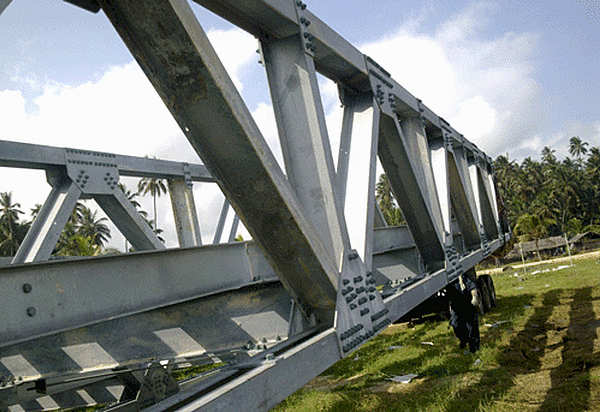Zinc Coating Life Predictor
The Zinc Coating Life Predictor (ZCLP), software developed by Dr. Gregory Zhang, Ph.D. of Teck Metals Ltd., is a method to estimate the corrosion rate of zinc in various environments. The program performs calculations based on models developed using statistical methods, neural network technology, and an extensive worldwide corrosion database. The environmental data input required to estimate corrosion rate includes temperature, airborne salinity, sulfur dioxide concentration, relative humidity, rainfall, and sheltering condition (indoor, rain-sheltered, or outdoor). Once these values are known, the software calculates and reports a corrosion rate and also gives the option to either calculate the predicted life, given the coating thickness, or the coating thickness required to achieve a specified life.
See instructions for using the ZCLP to accurately calculate corrosion rates of a hot-dip galvanized coating in atmospheric environments.

The ZCLP was used to develop an anticipated time to first maintenance (TFM) for hot-dip galvanized steel of varying coating thicknesses in a wide array of environments based on the factors that highly influence corrosion rates. TFM is the life until 5% of the surface is showing iron oxide (red rust). At this point, it is unlikely the underlying steel has weakened or the integrity of the structure is compromised. However, it is appropriate to select a brush- or spray- applied corrosion protection system to apply to extend the life of the steel product. The projected time to first maintenance estimated by the ZCLP is conservative for the 21st century due to the substantial improvement in pollution and thus corrosion rates over the last several decades.

The environmental data required to use the Zinc Coating Life Predictor is obtained from online resources. All of the predictions made are assumed to be in open atmosphere and subject to all environmental conditions. The temperatures, humidity, and annual precipitation (or rainfall) are gathered from the National Oceanic and Atmospheric Administration, or NOAA. Specifically, NOAA Comparative Climatic Data Charts and Data Mapping Tool provide much of the data needed to obtain an accurate prediction for the time to first maintenance of HDG steel.
Some cities, particularly rural ones, do not monitor their levels of sulfur dioxide due to their low concentration. These values are estimated to be the lowest of all the concentrations. Air salinity data for numerous environments does not readily exist. Some data exists for areas close to the sea; therefore, for inland areas, these values are estimated based on their distance from the ocean and from any other known data. Some examples of airborne salinity data can be found on the Zinc Coating Life Predictor website, as can examples of the other four environmental parameters.
